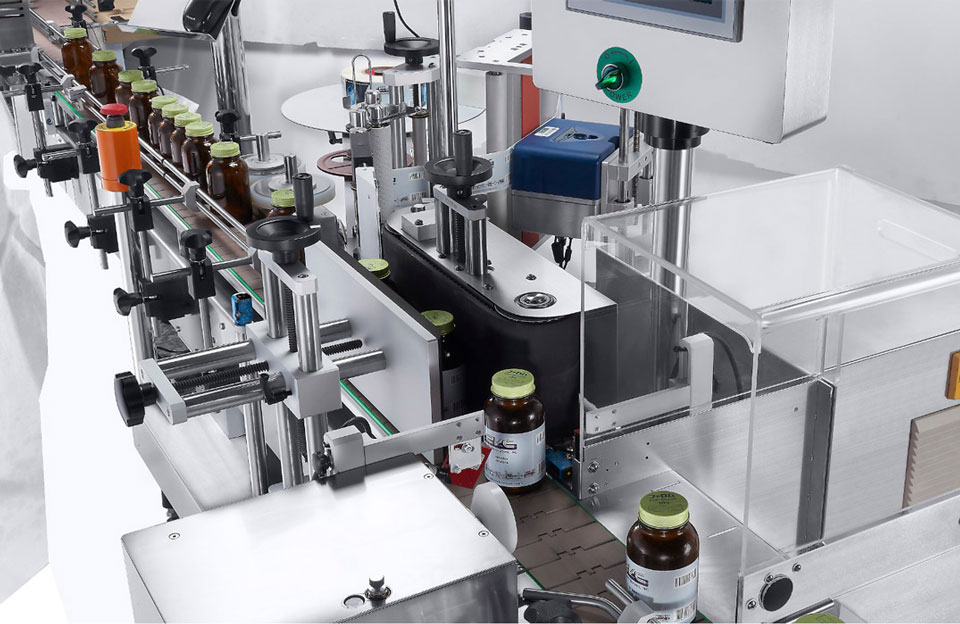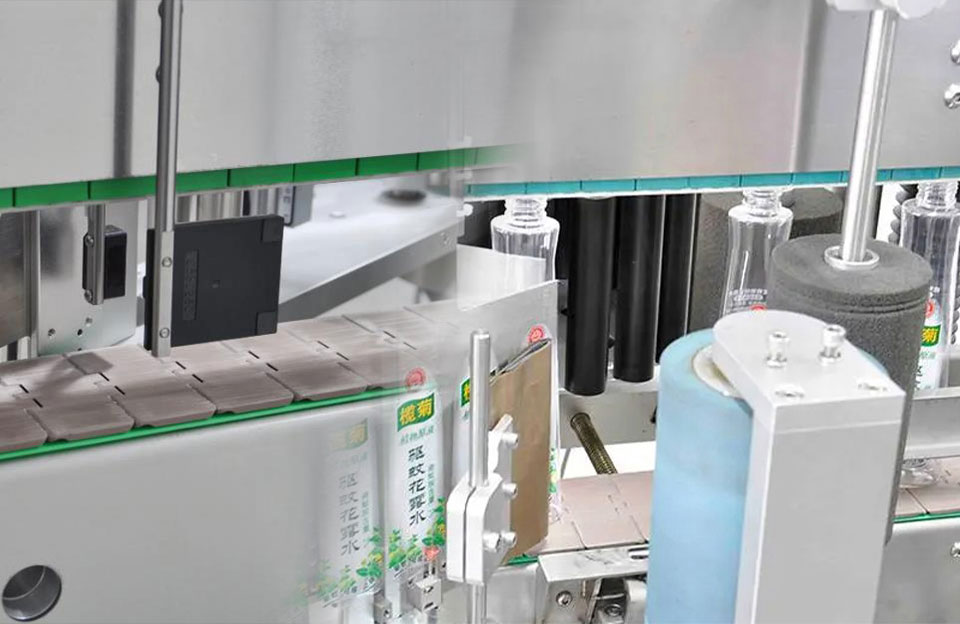Labeling machinery has a wide range of applications, as most commercial products have labels on the item and its packaging. They can also create labels on cartons, cases, and pallets. Industries these machines serve include food and beverage, pharmaceutical, agriculture, home and office, electronics, agriculture, and many more. The applications for labeling machines are diverse and rich. Labeling machine can create text and graphics such as simple barcodes, QR codes, batch codes, expiration dates, vivid images, and logos.
The Status Quo in Labeling Machine From The Perspective of Consumption
From a consumption level, the consumption of status quo in labeling machine is influenced by various factors, including industry growth, packaging requirements, regulatory compliance, and technological advancements.
- Growing Demand: In recent years, the growing demand in the labeling machine industry can be attributed to the growing demand for efficient and automated labeling solutions in various industries. As consumer expectations for product identification, traceability, and branding continue to rise, businesses are investing in labeling machines to meet these needs.
- Industry-Specific Applications: Different industries have specific labeling requirements, resulting in various applications for labeling machines. For example, the food and beverage industry requires labeling machines that can handle a variety of packaging formats, including bottles, cans, cartons, and bags. The pharmaceutical industry has specific labeling needs for product identification, regulatory compliance, and safety. Other industries, such as cosmetics, personal care, and logistics, also contributed to the consumption of labeling machines.
- Regulatory Compliance: Compliance with labeling regulations is a key factor driving the consumption of labeling machines. Industries are governed by labeling standards such as ingredient disclosure, nutritional information, safety warnings, and product traceability.
- Technological Progress: The technological progress of labeling machines has promoted increased consumption. Higher labeling accuracy, higher speed, enhanced connectivity, and automation features are some of the features that are attracting businesses to invest in advanced labeling machines. The integration of technologies such as artificial intelligence, machine learning, and the Internet of Things has further enhanced the capabilities and efficiency of labeling machines.
- Packaging Trends: Changing consumer preferences and packaging trends will also affect the consumption of labeling machines. Customization, personalization, and branding requirements drive businesses to invest in labeling machines that can meet these needs. Additionally, innovations in packaging materials, such as flexible and sustainable packaging, may require labeling machines capable of labeling these packaging formats.
- Regional Differences: Due to differences in industrial sectors, market maturity, and economic factors, the consumption of labeling machines may vary in different regions. Developed regions such as North America and Europe have a mature labeling machine market driven by food & beverage, pharmaceuticals, and cosmetics industries. Emerging economies in the Asia Pacific and Latin America are seeing increasing consumption of labeling machines in line with industrial growth and expanding demand for packaging.
The Status Quo in Labeling Machine From The Perspective of Production Side
From the production perspective, the status quo in labeling machine industry has experienced several trends and developments.
- Market Competition: The labeling machine industry is highly competitive, with numerous manufacturers and suppliers catering to global demand. Established companies and small and niche players contribute to the production of labeling machines. The emergence of a new competitive landscape promotes innovation, quality improvement, and cost optimization to meet customer needs and gain a competitive advantage.
- Technological Progress: Significant progress has been made in the production technology of labeling machines, including servo drive systems, touch screen interfaces, smart controls, and smart sensors to optimize the labeling process. Manufacturers invest in R&D to improve labeling accuracy, speed, and efficiency, increase automation capabilities and integrate advanced features.
- Customization and Flexibility: Labeling machine manufacturers strive to provide customized solutions to meet the diverse needs of the industry and their specific labeling requirements. Flexibility in machine design and reconfigurability allows manufacturers to offer labeling machines that can handle different packaging formats, label types, and application methods, allowing businesses to adapt machines to their unique production processes and product specifications.
- Quality and Reliability: A labeling machine should always deliver high-quality results. Manufacturers focus on producing reliable machines that can run continuously and provide accurate label placement. Quality control measures and adherence to industry standards ensure that labeling machines meet customer performance, durability, and reliability expectations.
- Integration With the Packaging Line: Labeling machines are usually integrated into the packaging line and used in conjunction with other machinery and automation systems. Manufacturers design labeling machine to fit seamlessly into production lines, producing a smooth and efficient labeling process. Integration capabilities, compatibility with existing production equipment, and synchronization with upstream and downstream processes are key considerations for manufacturers.
- Industry-Specific Solutions: Labeling machine manufacturers offer industry-specific solutions to meet the unique needs of each industry. For example, manufacturers develop labeling machines suitable for the food and beverage, pharmaceutical, cosmetics, and personal care industries, among others. Different industry-specific solutions may include features such as hygiene standards, regulatory compliance, serialization capabilities, and specific label application methods.
- Service and Support: The manufacturer also provides customers with comprehensive service and support while producing the labeling machine, which includes installation, training, maintenance, and troubleshooting services to ensure optimum machine performance and minimize downtime. Manufacturers often have dedicated service teams or form partnerships with service providers to meet customer needs promptly.
- Global Market Share: The labeling machine industry spreads worldwide, and manufacturers meet the needs of both domestic and international markets. Manufacturers may have regional or international distribution networks to reach customers worldwide. Furthermore, globalization has facilitated collaborations, partnerships, and acquisitions among labeling machine manufacturers, enabling them to expand their business scope and market share.
The Status Quo in Labeling Machine From The Perspective of Product Types
Regarding product type, the labeling machine industry offers a variety of machines designed to meet different labeling needs. The status quo in labeling machine is as below:
- Automatic Labeling Machine: The market status quo in labeling machine can be seen from the automatic labeling machine in terms of product typesAutomatic labeling machine is widely used in industries that require high-speed and accurate labeling. Automatic labeling machines usually use advanced technologies such as servo drive systems, precision labeling machines, and integrated controls, which can handle many products and automatically label them without much manual intervention to achieve efficient and reliable labeling.
- Semi-Automatic Labeling Machines: Semi-automatic labeling machines usually require some human involvement, such as placing the product on a conveyor belt or activating the labeling process, and are suitable for smaller operations or applications requiring manual product feeding. Semi-automatic machines offer flexibility, ease of use, and cost-effectiveness for businesses with lower volumes.
- Wrap-Around Labeling Machine: Wrap-around labeling machines are designed to apply labels around cylindrical or round containers such as bottles, cans, and jars. Wrap-around labeling machine typically feature features such as adjustable applicator heads, high-speed application, and precise label positioning to ensure labels are accurately wrapped around products, providing a professional and seamless appearance.
- Front and Back Labeling Machine: Front and back labeling machines are usually used in industries that require double-sided labeling for brand, product information, or regulatory compliance and are used to label products on the front and back of the product at the same time, Products can be labeled efficiently and simultaneously, reducing production time and costs.
- Top Labeling Machine: Top labeling machine ensures accurate label placement and consistent adherence to the top surface for easy identification and product branding; designed to apply labels to the top surface of products such as flat packs, boxes, trays, or lids. Top labeling machine are usually equipped with adjustable label heads, conveyor systems, and advanced control mechanisms.
- Printing and Labeling System: The printing and labeling system combines printing and labeling functions into one machine, which can print variable information such as barcode, serial number, expiration date, or batch code and then stick the printed label to the product superior. Print-and-apply systems are often used in industries that require on-demand labeling with real-time variable data printing.
- Front and Back Wrapping Labeling Machine: The front and back wrapping labeling machine is a special machine that can label the product’s front, back, and surroundings simultaneously; especially suitable for labeling irregular shapes or complex containers that require multi-sided labeling. Provide efficient labeling solutions for products with different label placement requirements.
- High-Speed Labeling Machine: High-speed labeling machines usually use advanced automation, precision control systems, and efficient label feeding mechanisms designed to handle large-scale production and operate at very high labeling speeds to ensure high throughput Fast and accurate labeling in mass production environments.
- Special Purpose Labeling Machine: The labeling machines industry also provides specialized machines for specific applications or industries, which include vial labeling machines in the pharmaceutical industry, tamper-evident labeling machines, RFID-enabled labeling systems, and shrink sleeve labeling machines wait. Specialty labelers meet unique labeling requirements and meet specific industry needs.
Conclusion
Regardless of the aspect, the development status quo in labeling machine is growing steadily, and the labeling machine industry provides a variety of product types for different applications, packaging formats and industry requirements. Manufacturers are constantly innovating and developing new labeling machine models to meet changing business needs across industries


